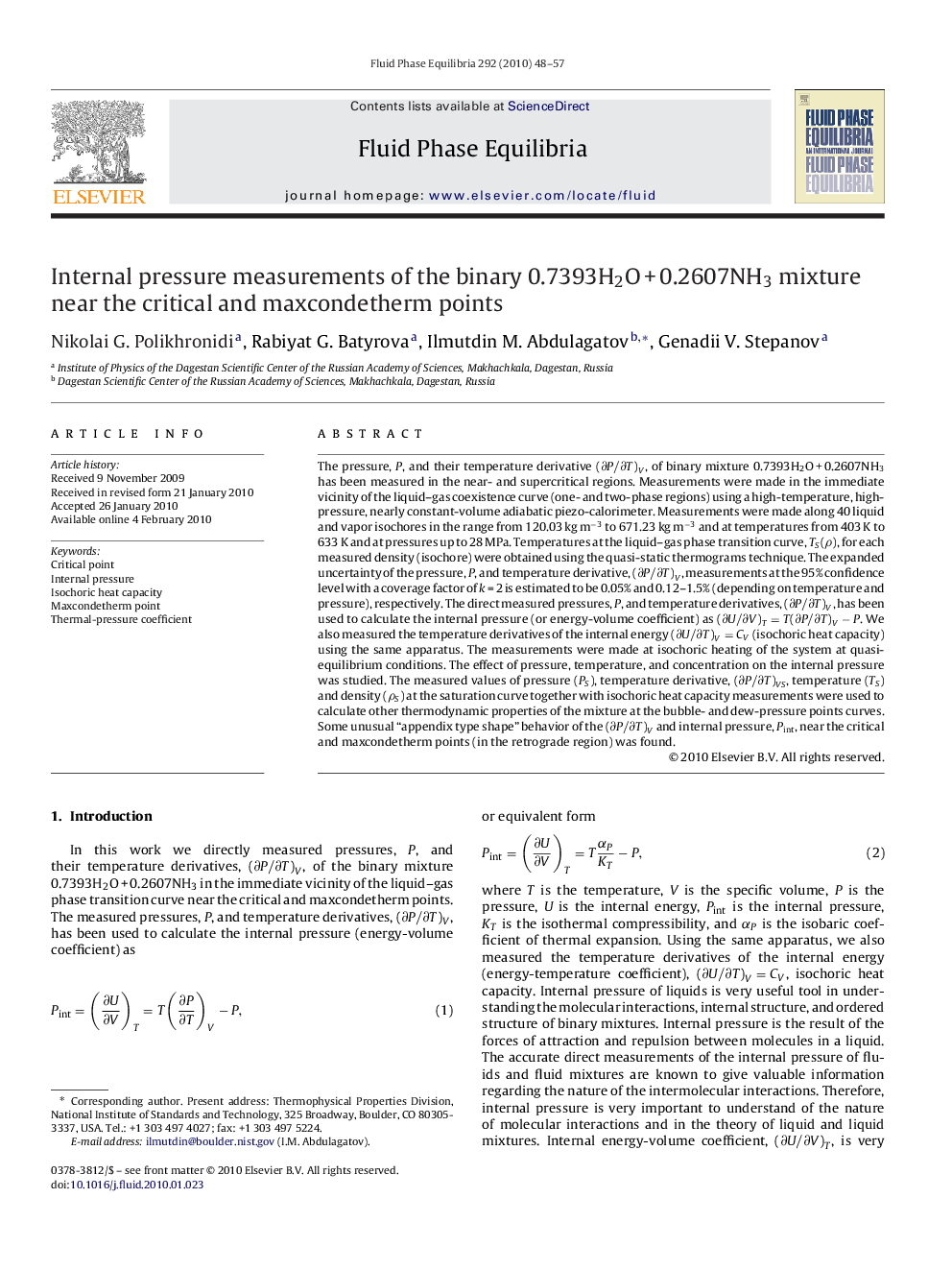| Article ID | Journal | Published Year | Pages | File Type |
|---|---|---|---|---|
| 202926 | Fluid Phase Equilibria | 2010 | 10 Pages |
The pressure, P , and their temperature derivative (∂P/∂T)V(∂P/∂T)V, of binary mixture 0.7393H2O + 0.2607NH3 has been measured in the near- and supercritical regions. Measurements were made in the immediate vicinity of the liquid–gas coexistence curve (one- and two-phase regions) using a high-temperature, high-pressure, nearly constant-volume adiabatic piezo-calorimeter. Measurements were made along 40 liquid and vapor isochores in the range from 120.03 kg m−3 to 671.23 kg m−3 and at temperatures from 403 K to 633 K and at pressures up to 28 MPa. Temperatures at the liquid–gas phase transition curve, TS(ρ)TS(ρ), for each measured density (isochore) were obtained using the quasi-static thermograms technique. The expanded uncertainty of the pressure, P , and temperature derivative, (∂P/∂T)V(∂P/∂T)V, measurements at the 95% confidence level with a coverage factor of k = 2 is estimated to be 0.05% and 0.12–1.5% (depending on temperature and pressure), respectively. The direct measured pressures, P , and temperature derivatives, (∂P/∂T)V(∂P/∂T)V, has been used to calculate the internal pressure (or energy-volume coefficient) as (∂U/∂V)T=T(∂P/∂T)V−P(∂U/∂V)T=T(∂P/∂T)V−P. We also measured the temperature derivatives of the internal energy (∂U/∂T)V=CV(∂U/∂T)V=CV (isochoric heat capacity) using the same apparatus. The measurements were made at isochoric heating of the system at quasi-equilibrium conditions. The effect of pressure, temperature, and concentration on the internal pressure was studied. The measured values of pressure (PSPS), temperature derivative, (∂P/∂T)VS(∂P/∂T)VS, temperature (TSTS) and density (ρSρS) at the saturation curve together with isochoric heat capacity measurements were used to calculate other thermodynamic properties of the mixture at the bubble- and dew-pressure points curves. Some unusual “appendix type shape” behavior of the (∂P/∂T)V(∂P/∂T)V and internal pressure, PintPint, near the critical and maxcondetherm points (in the retrograde region) was found.
